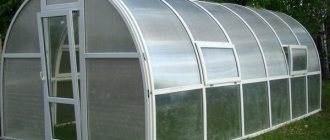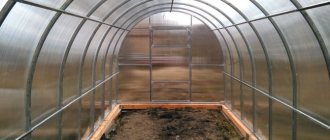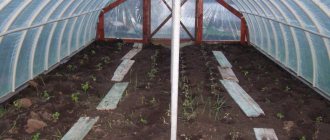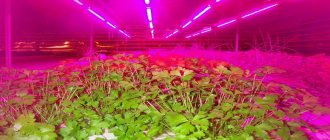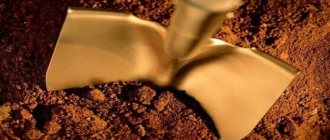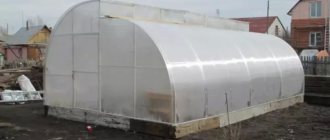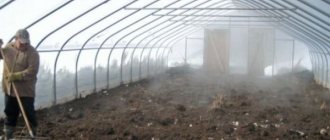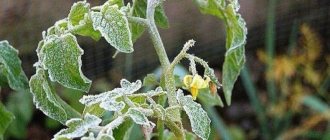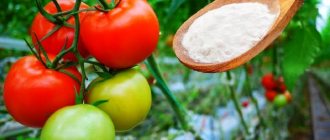A greenhouse is a separate, cozy little world in which vegetables grow very crowded. Under such conditions, the likelihood of plants being damaged by pathogenic microorganisms multiplying in the soil increases significantly. To prevent this from happening, the soil in the greenhouse should be changed annually. If for some reason it is impossible to change the soil in the beds, then in late autumn (after harvesting) or early spring (before planting seedlings) the greenhouse soil should be disinfected. To disinfect the soil, you can use boiling water, potassium permanganate, Fitosporin, copper sulfate, formaldehyde or regular bleach.
Preparing the greenhouse for disinfection
After the last vegetables growing in the greenhouse have been harvested, you must:
- remove all garden tools from the building, dismantle old trellises, collect and dispose of strings used for tying bushes;
- carefully select all the roots from the ground, rake tops, leaves and other plant debris into a pile, pack them in large bags, take them outside the garden and burn them;
- wash the transparent parts of the greenhouse with soapy water, rinse off the foam with water flowing under high pressure from a garden hose with a shower head, wipe the glass or polycarbonate sheets with a sponge soaked in a bright purple solution of potassium permanganate;
- wash the metal pipes of the frame with a concentrated solution of copper sulfate, whiten the wooden parts of the structure with lime;
- use a rake to break up all the clods of earth on the ridges, loosen well and thoroughly level the soil.
Advice. A product that perfectly disinfects not only the soil, but also the greenhouse structure itself, is the toxic smoke emitted by a smoldering sulfur bomb, but only glass greenhouses with a wooden frame can be fumigated in this way. Sulfur cannot be used to disinfect metal-based structures.
Metal greenhouses cannot be treated with a smoke bomb.
Precautionary measures
When using potassium permanganate, you need to take into account that a highly concentrated solution or simply crystals of the substance can cause a severe burn if it comes into contact with the skin. Therefore, when working, observe the following precautions:
- personal protective equipment is used (rubber gloves, safety glasses, respirator);
- During the process of soil disinfection, you must not remove personal protective equipment, drink, smoke, or eat food.
Expert opinion
Zarechny Maxim Valerievich
Agronomist with 12 years of experience. Our best country expert.
Ask a Question
If liquid gets on your skin, wash the affected area with soap and water.
If the drug gets into the eyes, rinse the mucous membranes with plenty of clean water. If the concentrated product is accidentally swallowed, the victim should drink plenty of fluids and seek medical help.
Soil steaming
The simplest, environmentally friendly and at the same time very effective way to disinfect soil in greenhouse beds is to steam it three times.
The ridges are poured generously with boiling water, immediately covered with a thick, damage-free, dark film, pressed around the perimeter with reinforcing bars or beams and left in this form for a day. The next day, the cover is removed, the beds are loosened, simultaneously selecting from them small “cooked” roots that were not noticed during general cleaning, and this whole process is repeated twice more at three-day intervals.
Advice. In order not to boil a huge amount of water, use a powerful steam generator - the stream of hot steam emitted by this unit will perfectly disinfect the ground.
Treatment of the greenhouse with white. “Whiteness” in the spring healing and eradicating treatment of the garden.
Hello dear friends. I welcome you to the “Dacha Stories” channel. Today I’ll tell you about another composition for eradicating garden treatments, which, unfortunately, has been undeservedly forgotten by summer residents.
The price of this solution is small, and any summer resident can afford it, and the processing efficiency is very high. At one time, collective farm gardens were mechanized with this solution.
I advise you to read the first article about spring eradication treatment of the garden if you have not already done so.
So, let's begin.
Let me say right away that this eradication treatment can be used on all garden trees and fruit bushes - without exception and without fear, and you can also treat grapes, strawberries, plus coniferous plants.
As I already wrote in the first article, the time for processing comes when the buds on the plants have cracked but have not yet opened. This so-called “green cone” phase. There will be nothing terrible if you carry out this treatment early, when the buds are still closed.
The solution, the recipe that I will give you now, can be used to treat plants whose buds have already opened more than in the green cone phase.
The main active ingredient in this treatment is sodium hypochlorite (sodium hypochlorite) - NaOCl, which is included, for example, in such a popular bleach as “Belizna”.
https://vk.com/photo-159774511_456241601
“Belizna” contains approximately 20% stabilized sodium hypochlorite, 5% caustic soda and surfactants, the rest is water.
Despite such a “terrible” name, this seemingly completely inorganic substance has found its application in agriculture. In addition to processing, for example, greenhouses, hotbeds, water supply systems, they carry out disinfection treatment of manure storage facilities and manure removal systems of poultry farms, pig and livestock farms, livestock pens, wagons for their transportation, feeders, etc.
In addition, solutions containing sodium hypochlorite have been used for many years as a fungicidal and bactericidal treatment of grain.
It is also used in pest control. Several years ago, a huge treatment was carried out with a solution containing sodium hypochlorite on green spaces in Sochi. Where a serious threat was posed by one of the harmful families of butterflies - the moth, which destroys the genus of evergreen shrubs and trees of the boxwood family. Solutions containing sodium hypochlorite perfectly destroy spider mites, scale insects, and aphids.
Particularly promising is the use of electrolytic sodium hypochlorite.
One of the properties we need from sodium hypochlorite is the release of large quantities of active oxygen during decomposition, and only then free chlorine. Active oxygen also has an oxidizing and disinfecting effect.
Many people believe that “Whiteness” and bleach are practically the same thing. This is wrong. What we traditionally call bleach is bleach - Ca(ClO)2. In our case, these are sodium salts, bleach is calcium salts.
In its pure form, “Whiteness” cannot be used in polycarbonate greenhouses.
But enough theory. How to dilute “Whiteness” for eradication treatment?
Pour 1 liter of “Whiteness” into ten liters of water, stir thoroughly and add one hundred grams of potassium monophosphate, stir until completely dissolved.
Use immediately. It is better to process in calm weather, at a temperature of + 5 degrees.
Sometimes “Whiteness” is 10%, not 20%; accordingly, you need two liters of it, not one.
Chemical reactions occur in the tank mixture, resulting in the formation of active oxygen and an insignificant amount of table salt. Chlorine is not released in free form and does not combine with other substances.
Thank you for your interest in my article.
If you want to share your experience, warn other summer residents from mistakes, talk about successful experiments, then send your messages to [email protected] I will be happy to publish them on our channel.
Treatment with potassium permanganate and bleach
Potassium permanganate is a powerful oxidizing agent that destroys any protein compounds, and therefore has a detrimental effect on all microorganisms. To disinfect greenhouse soil, the beds are generously spilled once with a freshly prepared thick purple solution of potassium permanganate.
The easiest way to disinfect is steaming the soil.
The use of lime for soil disinfection is advisable when the soil in the greenhouse is very acidic and there is a suspicion that it is infected with late blight, clubroot or root-knot nematode. No later than six months before planting the seedlings, lime is scattered over the beds (at the rate of 1 glass per square meter), after which the soil in the greenhouse is dug up and leveled with a rake.
How to water the soil with potassium permanganate. Do not water the beds with potassium permanganate
Trusting gardeners are very fond of various tips and folk recipes for treating plants from everything in the world. Potassium permanganate, brilliant green and iodine are, perhaps, the top remedies in such advice. Methods and a set of ingredients are passed on from mouth to mouth, as are legends about their miraculousness.
No one doubts the benefits of such recipes. Especially in comparison with the terrible “chemistry”. And no one even tries to figure out how it all works? Is there really no harm from treating plants and soil with pharmaceutical preparations?
Let me tell you exactly how potassium permanganate works in the garden. Or rather, why it doesn't work.
Treatment against diseases
Even for medicinal purposes, doctors prescribe a fairly strong solution, since it is in high concentrations that potassium permanganate has disinfectant properties. In order to influence the destruction of pathogenic microflora, the concentration of the solution must also be very high. One that will be destructive for the plant itself. No one will consciously water their beds like this.
The same doses with which popular advice is replete are simply negligible and absolutely useless.
Under one of the articles I was asked the question: “Why is potassium permanganate harmful? In Soviet times, we added it to the bathing water for newborns.” You see, in Soviet times the need for invention was cunning. People were deprived of information and many of the benefits of modernity. Previously, constipation in newborns was “treated” with soap.
A weak solution of potassium permanganate can be added wherever you like. But why waste time and effort on useless activities?
Feeding
Someone gives recipes for fertilizing using potassium permanganate. But ask your adviser, what exactly will such feeding give? If the calculation is to add potassium, then its content there is negligible and will not have any effect on the content of this substance in the soil and plants. It’s better to use ash for these purposes.
If you are promised manganese fertilizer, then all the more it is nonsense. Almost nowhere will you find lands where there is a deficiency of this element. In addition, manganese from potassium permanganate is in a compound that is not available for absorption by plants. Therefore, this activity will be useless.
This is where potassium permanganate really benefits from soaking seeds in it. But not for disinfection, but to increase germination due to oxidation of the shell.
Once again I urge you to think about it after hearing a stream of such popular advice. Before you pour everything into the soil under the motto “as long as it’s not chemicals,” think about whether it’s safe and effective? Or maybe this is a useless method from poor Soviet times, perverted to attract attention?
Thanks for stopping by! Please like if you liked the article. And subscribe so you don't miss new publications.
Use of formaldehyde
Due to the toxicity of the drug itself and the toxicity of its vapors, formalin is rarely used to disinfect beds. However, if the soil in the greenhouse is contaminated with mold fungi and whitefly larvae, it is sometimes treated with a formaldehyde solution prepared from five buckets of water and one liter of the drug at a standard 40% concentration.
If mold appears on the ground, it can be treated with formaldehyde
Attention! Spilling the beds with formaldehyde is carried out in an industrial respirator. No more than one and a half buckets of working solution are added per square meter, after which the greenhouse is closed for 3 days, then it is ventilated for two weeks, and then the beds themselves are dug deep.
Agricultural technology
The basis of agriculture, whether in a greenhouse or open ground, is crop rotation. Pests accumulate where crops of the same family are grown year after year. This also contributes to the creation of conditions for the flourishing of soil microorganisms (fungi), since the conditions necessary for the same plants persist for several years.
Important! A completely different matter is a change of cultures. If you plant different plants in a greenhouse every year (at least every 1-2 years), then the incidence of diseases in the soil and crops will noticeably decrease.
For example, cucumbers love high humidity and temperature. The soil under them should not dry out. In such conditions, the mushroom mycelium develops well, and in a year or two it will be problematic to cope with it. And if next year you plant tomatoes in this greenhouse, then you will have to create completely different conditions for them: dry air, temperatures much lower than for cucumbers, frequent ventilation. This will not allow the development of either fungi or some soil microbes.
Important! From an agronomic point of view, it is better to build 2-4 small greenhouses on a site than one giant one. This will help increase productivity, and in itself the creation of individual conditions for each plant with the application of fertilizers according to needs is another excellent technique.
Another way to improve soil health is to reduce soil acidity. For the most part, our soils are highly acidic, which in itself is not bad - microbes do not live in acidic soil. But there are few nutrients in it, beneficial microorganisms also do not take root, which means that plants grow either weakened or overfed with fertilizers. Neither one nor the other contributes to prosperity, so the plants die, leaving an environment for the development of rot, which significantly worsens the composition of the substrate and increases the incidence of crop diseases.
The addition of long-acting natural supplements in reasonable quantities will help reduce acidity and thereby correct the situation with natural fertility, such as:
These natural fertilizers are applied in the spring, after the melt water has disappeared, and repeated no earlier than after 2 years.
Prices for dolomite flour
Features of spring soil disinfection
Most of the above preparations, due to their high toxicity and long period of decomposition into safe components, are not suitable for soil disinfection in the spring.
Shortly before planting seedlings, the soil in the greenhouse can only be disinfected with steam, potassium permanganate or Fitosporin.
In spring, the greenhouse can be treated only with non-toxic preparations
“Fitosporin” is absolutely harmless to warm-blooded creatures, an innovative microbiological preparation of systemic action that suppresses the vital activity of pathogens of powdery mildew, fusarium, black gill, late blight, anthracnose, alternaria and many other diseases of vegetable and berry crops.
For disinfection, the soil in the greenhouse (a week before planting) is spilled with a solution of powdered “Fitosporin”, prepared by diluting 5 g of the drug in 10 liters of water.
Disinfection of soil in a greenhouse prevents outbreaks of plant diseases, protects vegetables from damage by insects, and thus gives reason to hope for a future bountiful harvest.
Top dressing
Manganese is an essential plant nutrition element. Its deficiency in the soil has a detrimental effect on the development of cultivated plants, reducing their immunity and productivity. The first signs of manganese starvation are the variegated color of young leaves, when the veins remain green, and the rest of the tissue of the leaf blade acquires a yellow or fawn tint.
Manganese starvation of grapes. Photo from vk.me website
It is worth noting that in acidic soils there is often an excess of manganese, and in those areas where the reaction is neutral or alkaline, this element is in an insoluble form and is inaccessible to plants. Therefore, in the latter case, it makes sense to give your green pets root or foliar feeding 2-3 times per season with an interval of 2-3 weeks with a slightly pink solution of potassium permanganate. It will have a positive effect on their development and increase resistance to adverse factors.
Gray rot
Raspberries and garden strawberries often suffer from this disease. The following solution helps cure crops: pour 2 small spoons of potassium permanganate into a bucket of water. Then spray the leaves of the plants and spill the soil under the bushes. Carry out the procedure before flowering, and then re-treat the crops in the summer. Just make the solution more concentrated - 3 spoons per bucket of water.
20 ml of peroxide per liter of water: 5 tips for growing strong pepper seedlings
How to make a comfortable hammock for a cat using improvised materials: he will be delighted
Trampled the mentor: what does Patlakh do, who was kicked out of the show “Dancing”
Late blight
This dangerous disease can also be successfully treated with potassium permanganate, but garlic must also be added to the solution. Grind 100 g of garlic along with the leaves, add water (200 ml) slightly warmer than room temperature and let it brew overnight. The next day, strain the infusion, add 1 g of potassium permanganate, pour it all into a bucket of water. Every 10-15 days, treat plants affected by late blight, especially carefully spray areas with spots.
Found a violation? Report content

